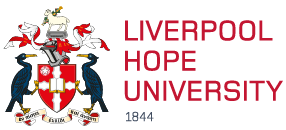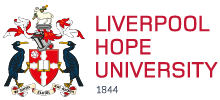AN exciting new art exhibition that probes the boundaries between old and new media arrives in Liverpool this week.
The group installation is called Signi-fiance: Painting Beyond Borders and comes to the Cornerstone Gallery on Thursday 17th March.
It forms part of the Angel Field Festival, an annual showcase of the creative arts organised and hosted by Liverpool Hope University.
And Signi-fiance brings together work from celebrated artists John Bunker, John Chilver, Ben Edmunds, Phil Frankland, Gunther Herbst, Peter Lamb, Charley Peters, Jessica Power, Michael Stubbs and Mark Wright.
Dr Michael Stubbs, a Lecturer in Painting at Glasgow School of Art, explains: “Signifiance: Painting Beyond Borders reflects the myriad ways the selected artists are pushing at and exploring the boundaries between old and new media, between our historically rooted understanding of painting practice and the contemporary critical discourse that attempts to break it down so as to reimagine its possibilities.
“Signifiance is a hybrid term coined by feminist philosopher, Julia Kristeva. Kristeva uses 'Signifiance' to suggest alternative ways to study human subjectivity and agency via semiotics and psychoanalysis.
“But how might this melding of the nouns Signification and Defiance be co-opted to explore a new kind of agency for painting in a technologically expanded image culture here in the 21st century?”
Below you can read a profile of the artists involved.
John Bunker works with print media, defunct advertising remnants and other urban detritus gleaned from city streets. He combines these elements with more traditional mediums to produce exquisite yet disquieting wall based assemblages. They are built up of internal relations of incongruous shaped parts to create a new whole without use of a stretcher or traditional support or surface. Working with extreme changes in scale and materials, Bunker's free reining abstractions channel both a brutal materiality and elegant formal relations creating illusive yet potent images.
http://www.foldgallery.com/artist/john-bunker/
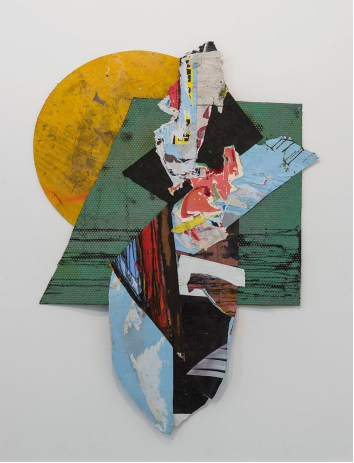
‘2 / 6 – Wallflower’, mixed media collage, 195 x 135 cm
John Chilver's artwork and writing coalesce around problems of agency. These problems lead him to philosophies of the event and questions of how 'the new' appears at all. Chilver's artwork operates mostly as para-painting. In various guises, it entertains an obsession with line and its modalities: as corridor, path, thread, vector; as bar, limb, stump; as edge; as axis; as cut. These then enable the works to generate semantic modalities such as connectedness/ separateness, movement/ simultaneity, and containment/ non-containment.
http://www.xero-kline-coma.com/archive/JohnChilver/JohnChilver.html
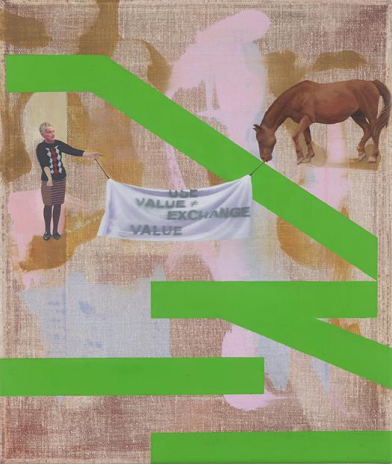
'Emily Rosamond Teaching the Remedial Class in Political Economy and Algorithm Studies', 2017, oil on canvas, 30.5 x 25.4 cms
Ben Edmunds is concerned with the materiality and process of painting itself. Utilising found, utilitarian materials such as fabric dye, enamel on canvas, PSP spinnaker tape, laser cut perspex, carbon fibre frame and embroidered strap and buckles, he forms them into shaped painting. His abstract works are the final product of a digital process of rearranging and editing forms in an effort to lay bare the space between the many layers that make up an otherwise two-dimensional painting.
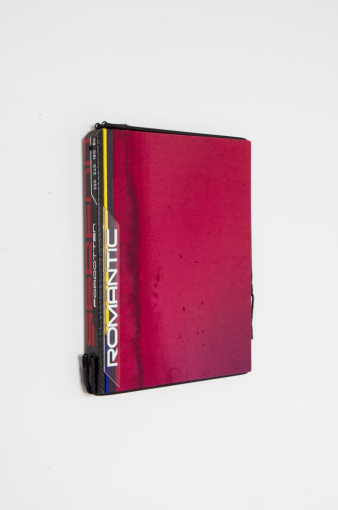
'That feeling that I lost today’, bleach and PSP spinnaker tape on canvas; carbon fibre frame, shock cords and carabiners, 180 x 145cm
Phil Frankland’s practice explores the tension between the quickness of manipulating collage and the gestation period which painting requires. The iterative development of his practice allows ideas to gestate and be exposed. Although ultimately playful in material and spontaneous in appearance, these paintings and collages are often slow moving and subjected to various transitions along the way to more ‘finished’ states.
https://www.philfrankland.co.uk
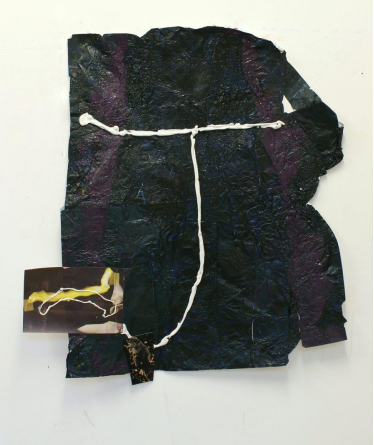
J’ 2017, acrylic, mastic, PVC , 100 x 80 cm
Gunther Herbst’s painterly precision is used critically to assign ‘otherness’ to the instructiveness of signs. There is a flip side to its address, just like the word ‘otherness’ no longer assigns the state of being the other. Herbst understands this more than most. After his relocation to Europe, the history of his native South Africa took on an altogether different identity that informed his painterly practice through different visual, iconographical and contextual histories and languages.
https://www.guntherherbst.com/biography
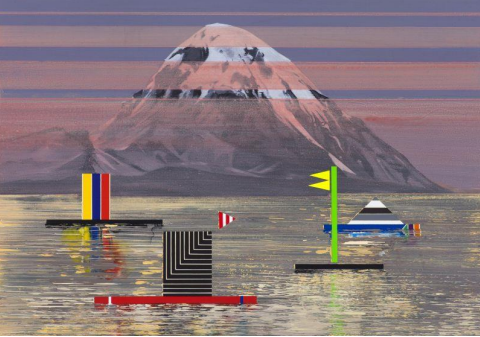
‘Who is afraid of Lygia Pape’, 2015, acrylic on paper, 32 x 46cms
Peter Lamb combines scaled-up photographs of his well-worn ‘painterly’ studio floor with painted gestural overlays. The physical, gestural paint marks contradict the representational space of the photograph. A paradoxical reading of a vertiginous shot of the flat floor, re-presented on the wall and then painted upon as if it were a regular wall-based painting, provides an optical double-take that positions the viewer in an impossible space. Lamb questions the seeming differences between the two mediums whilst simultaneously disorientating his audience.
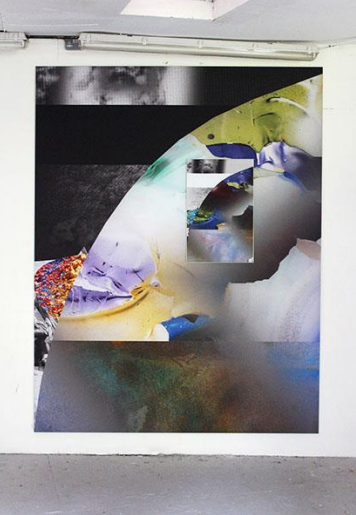
‘The same in animal form’, 2017, digital print on synthetic canvas, aluminium subframe, 280 x 190cms
Charley Peters work is concerned with the spatial potential of the painted surface, on which she applies subtle variations in colour, tone and scale to construct illusionary light and structural depth. Starting from an interest in the legacy of hard edged abstraction, her work considers the manifestation of painterly language in the context of contemporary media, where viewers experience multitudinous visual information in quick succession, often dematerialised and seen on screens.
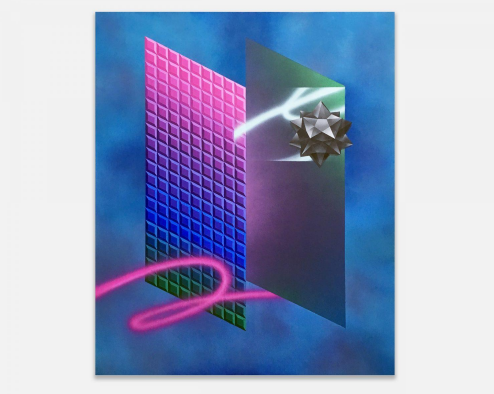
‘~nmh*nfm~’, 2018, acrylic on canvas, 120cm x 150cm
Jessica Power’s practice explores deconstructed forms of language using reactionary, improvised, process lead mark making. She uses a symbolic visual language inspired by ancient sculpture, images of metamorphosis and classical content that sits in opposition to the experimental processes of her practice. The resulting collaged like paintings hope to provoke a dialogue of conflict between imagery and materiality.
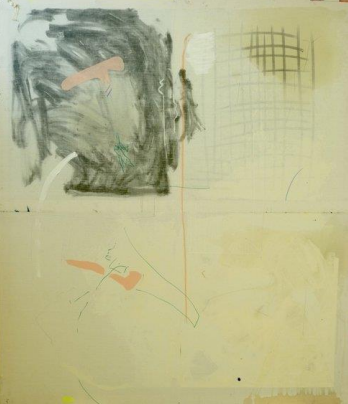
Mixed media on canvas
Michael Stubbs pours household eggshell, gloss paints and tinted floor varnishes over ready-made adhesive stencils, peels these off when dry and repeats the process again and again to develop both an optical and material layering effect. The flatness of the repeated surfaces (which resembles the flat digital screen) offers a heady mix of opaque and transparent planes. These contrastingly delicate and bold passages, which playfully cross-reference the genres of pop and abstraction, deliriously reveal themselves in all their sensualist glory.
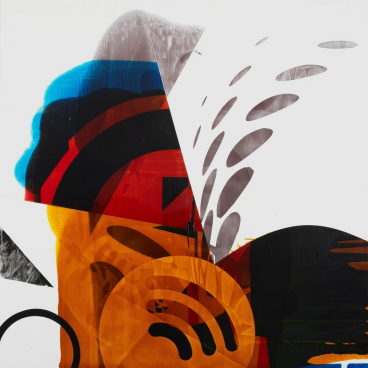
‘Fresh Go Info’, 2017, household paint, tinted floor varnish on MDF, 122 x 122cms
Mark Wright’s paintings are informed by the legacy of historical lyrical abstraction and its engagement with images sourced from organic structures and landscape. In his work, mediated images transformed by the digital and embodied within the screen, are then used as a focal point for exploring painterly elements, including surface, facture and gesture. These pictorial and material qualities enable Wright to fuse visual elements identified within different periods of painting ranging from the neo-romantic to the post-digital.
https://www.jamesfreemangallery.com/artist/mark-wright/
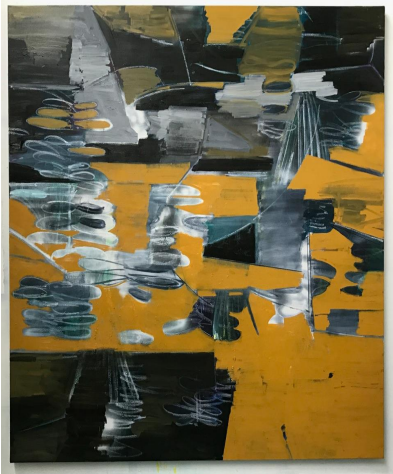
Mark Wright, ‘Elements’, 2017, oil, acrylic on canvas, 214 x 214cms
